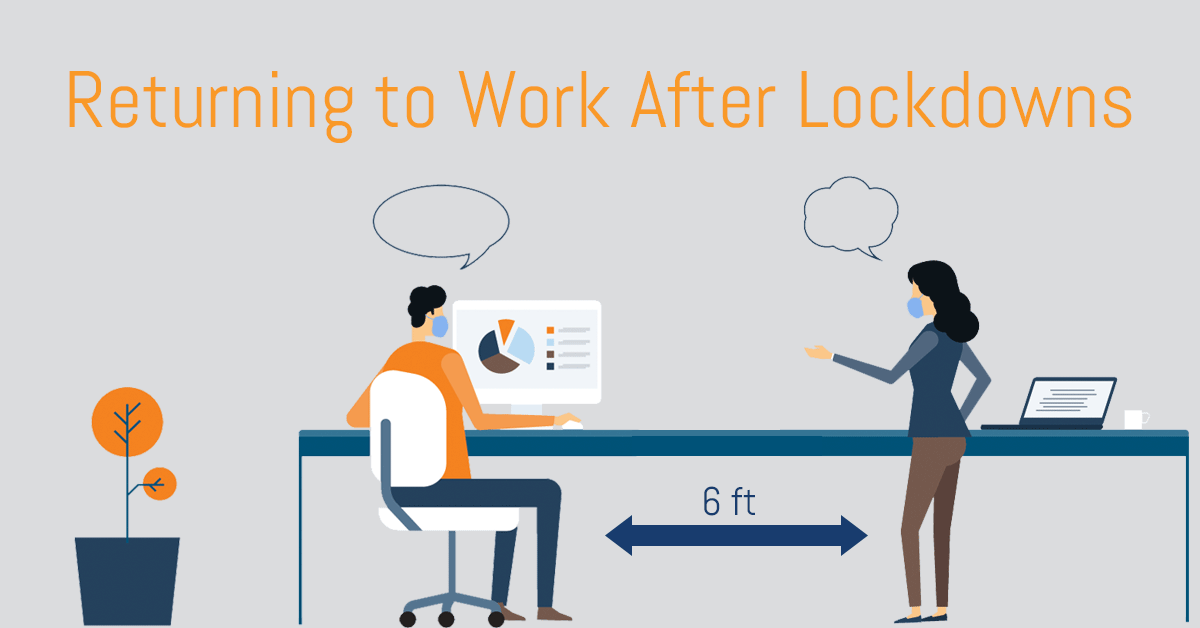Return to Work After COVID - Strategies for a Smooth Transition | CTG Consulting
Texas businesses have cautiously begun opening after Governor Greg Abbott ended the statewide mask mandate almost a month ago. Businesses have been able to open at 100% capacity since then also, leaving many businesses the option to choose how to move forward.
Statistics show 62% of employees worked from home for most of last year. Many studies revealed productivity increased while employees worked from home, contrary to popular belief.
Towards the end of 2020, data suggested more employees were missing being in the office, and throughout the beginning of 2021, trends have continued to reflect the same tendency.
While organizations plan their next move, employee safety is often at the top of the list. Businesses must reimagine their pre-COVID policies with new priorities in mind.
1. Employee Safety
2. Where employees will work
3. Policies
4. Productivity
#1- Employee Safety
With employee safety at the top of the list, many organizations may lean towards letting employees continue working from home until herd-immunity is achieved with vaccines. As it stands now, only 16.1% of the population in Texas is fully vaccinated, and another 28.5% have had at least one dose. Herd immunity can be achieved when a majority of the population becomes vaccinated. Businesses will also have to decide whether or not they will require employees to receive a vaccine, and yes, legally they can do so in Texas.
#2- Where Employees will Work
Many workers enjoy working from home because they feel more productive, less stressed, and have a better work-life balance. Although these feelings can be different between to baby boomers and millennials. Whereas baby boomers prefer more being in office to millennials preferring flexibility of working from home.
When considering employee safety, whether workers coming back to work in the office or continue working at home, it’s important to keep the CDC guidelines and recommendations in mind.
A remote workforce with virtual office tools can help remote employees remain productive and secure. There are many solutions to help employees collaborate remotely such as Microsoft Teams, SharePoint, and Azure.
#3- Policies
If employers are requiring all employees to return to the office, it’s suggested to give employees ample time to make adjustments for their new routine. Some organizations are also offering incentives to encourage their employees to return to the office.
Another policy suggestion can be the days and times employees are in the office vs. working for home. For example, if workers are in the office Monday, Wednesday, and Friday, schedule important meetings and projects on those days.
Working from home is becoming a permanent trend, but may not work for all businesses. It’s important to understand the requirements needed to complete a job for employees as well as business owners and managers and identify where there is flexibility. Even before the pandemic, employees voiced that flexibility was important to them, and statistics show the amount of flexibility can directly impact employee retention.
#4- Productivity
One of the biggest concerns for employers who have a remote workforce is productivity. Finding ways to facilitate productivity in a remote environment or in the office can be challenging, however using applications for time-tracking can be helpful with viewing statistics about employees’ productivity.
One solution is Microsoft Analytics. It gives employers/employees a summary of their productivity, collaboration, and “quiet hours.” This kind of data is valuable to employees and management alike to make it easier to identify areas for improvement as well as tracking progress.
